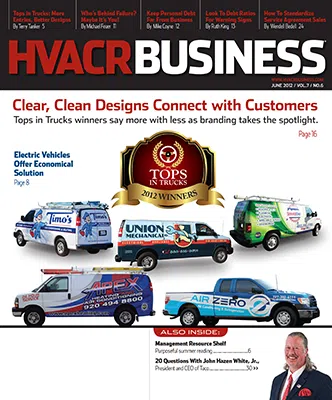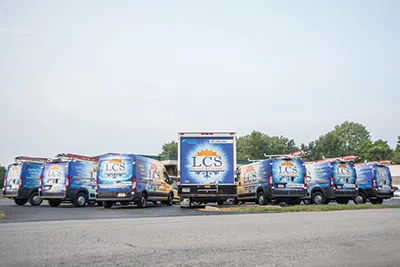1) Keeping employees healthy means keeping productivity and attendance higher — important to industries such as hvacr, which is suffering from an employee shortage.
2) As more businesses are implementing consumer-driven health insurance plans, wellness programs can educate employees and their families about the consequences of choices such as how to eat or whether to exercise.
3) In July two senators introduced legislation that would give businesses that offer wellness programs a tax credit. If it becomes law, it would offset some of the cost of these programs.
Usually, companies contract with outside vendors to provide wellness programs, which can offer many different services including health monitoring and assessment, education, and in some cases, access to treatment assistance (for instance, weight-loss or smoking-cessation programs). The goals of a wellness program can vary, but their benefits have been touted as a more satisfied and productive workforce, reduction in health-care and insurance costs, and improved attendance and performance.
The concept of wellness programs is relatively new, and many employers view them first as a benefit for employees and second as a way to reduce costs and improve productivity. Most data that ties such programs to direct savings or performance improvement is on a case-by-case internal basis. But obviously, companies, medical professionals, and policymakers see such programs as valuable.
In July Sen. Tom Harkin (D Iowa) and Sen. Gordon Smith (R-Ore.) introduced legislation that would provide a tax credit worth 50% of costs incurred per employee for wellness programs (up to $200 for the first 200 participating employees and $100 per employee thereafter). To qualify, businesses would have to provide programs that meet at least three of four criteria: events to raise awareness and screen for health risks; seminars to boost behavioral change; incentives for participants; and a committee to oversee the wellness program. Businesses that offer wellness programs would be eligible for the credit for up to 10 years.
According to the Henry J. Kaiser Family Foundation, “Harkin and Smith said the cost of the legislation has not yet been calculated. However, Harkin said that typically, every dollar spent on wellness and prevention programs over one year to 18 months saves $3 to $4 in health care costs. Harkin said that he hopes to attach the measure to tax legislation that likely will be considered in the fall. The American Medical Association, American Lung Association, American Cancer Society, and the U.S. Chamber of Commerce support the legislation.”
2-J Supply Company Inc., an hvacr distributor with eight locations, started a wellness program this spring as part of a changeover in insurance plans. (The company switched to a high-deductible health-insurance plan with a Health Savings Account. See the July cover story on Health Savings Accounts at www.hvacrbusiness.com.)
Jeff Runyon, vice president of finance, said the main goal of the program was to help employees. It makes sense that with 87 employees participating, 2-J eventually will benefit from improved productivity and attendance — and lower insurance rates — but that wasn’t the main motivator.
“Our primary concern was trying to help people, and then to reduce rates,” he said.
2-J contracted with TriHealth Corporate Health. It learned of the company through its insurance provider. TriHealth first conducted screenings for things such as blood pressure and lifestyle habits on participating employees and then prepared an assessment for each participant. People identified as “high risk” for health problems could receive counseling if they wanted. Runyon stressed that the program was voluntary (although those who participated got a break on health-insurance premiums) and that all of the information TriHealth gathered and subsequent counseling remained confidential. It was not and never will be shared with anyone at 2-J.
The company spent about $16,200 for the initial screenings and reports, coaching, and follow-up screenings after six months.
2-J first invited employees and spouses who were covered by its health-insurance program to participate. Then, employees who aren’t covered by insurance asked to participate, so now all three groups are part of the program.
As for lessons learned, Runyon said it was important to assure participants that their health information would be kept confidential. Also, using reduced monthly premiums as an incentive was a good way to encourage participation without making employees feel coerced.
“We wanted it to be a reward, not a penalty.”
Finally, Runyon said in hindsight, it would have worked better to introduce the changes in insurance and the wellness program separately, as opposed to all at the same time. At times it was too much information for employees to process.
Nonetheless, 2-J expects good things from its investment.
“We felt even with the cost [of implementing the program], if we helped even a few people, it was worth it.”
Tonya Vinas is a former editor of HVACR Business.


